It’s never been easier for us to create and share our own content via social media, whether it’s video clips, images, memes or blogs. Some may question the quality of much of it, but no-one can deny the power of user generated content (UGC) in engaging users who are hungry for content that entertains and informs them. And if the content appeals to them, they’re likely to share it with their own networks and followers.
Recommendations and endorsements from people we know (or feel we know) are powerful drivers of consumer behaviours. Such is the power of UGC that brands large and small are looking to UGC to support in-house marketing strategies designed to boost brand awareness and customer interactions. But what are the benefits and potential drawbacks of relinquishing control of your brand’s messaging?
How can UGC boost your brand?
User generated content can be a powerful tool for brands to increase brand visibility, build trust and convert prospects to customers. There are various types of UGC from tiktok videos to instagram clips and blog posts. While there are no guarantees the content will be high quality or align with your brand values or brand narrative, opportunities to increase brand awareness are valuable under almost any circumstances.
UGC can boost brand awareness and customer loyalty in the following ways:
Building trust
When real customers share content relating to your brand, it feels more authentic and trustworthy. Potential customers are more likely to trust and relate to content created by their peers rather than from traditional advertising. It also provides ‘social proof’. Seeing others using and enjoying a product can make other potential customers validate the brand’s claims and encourage new customers to make a purchase.
Enhancing engagement
Encouraging customers to create and share content increases engagement. People enjoy being part of a community and contributing to a brand they like, leading to more interaction and brand loyalty.
Cost effective marketing
UGC provides brands with a steady stream of content without the high costs associated with professional content creation. This can include customer reviews, photos, videos, and testimonials.
Search engine optimisation (SEO)
Fresh, relevant content posted by users can improve a brand’s search engine ranking. Search engines favour websites with frequent updates, and UGC can help keep the content dynamic.
Community building
UGC fosters a sense of community and belonging among customers. When real people share their experiences and interact with each other, it demonstrates relatability and strengthens their connection to the brand.
Insights and feedback
UGC provides valuable insights into user experiences and customer preferences and behaviours which can help businesses to improve their products, services, and marketing strategies.
Expanding brand reach
When users share content about a brand on their personal networks, it extends the brand’s reach to a wider audience, often reaching potential customers who might not have been exposed to the brand otherwise and influencing their purchasing decisions.
Strategies to leverage user-generated content
Relying on customer reviews and UGC to share your brand’s messages can feel risky, but the impact of UGC is clear, and increasingly large and small brands alike are using UGC as a tool in successful digital marketing campaigns. By authentically incorporating UGC into your marketing strategy, you can build stronger relationships with your customers and enhance your brand’s credibility and trustworthiness. This, in turn, can drive up engagement rates and increase customer loyalty, and help to optimise business growth.
Strategies to leverage UGC include:
Encourage customer reviews and testimonials
Actively seek feedback from your customers and showcase their reviews and testimonials on your website and social media channels to share stories of customer satisfaction. Real experiences from real customers enhance trust and credibility.
Create campaigns that encourage shares
Design marketing campaigns that encourage customers to share their experiences of your products or services. You can use this brand engagement and bolster your online presence using branded hashtags, and incentives that further motivate users to generate and share content.
Feature customer stories
Highlight individual customer stories in your marketing efforts. This could be through blog posts, video interviews, or social media features. Personal stories add a human touch to your brand.
Use social media
Monitor and share user-generated content from social media platforms, and potentially encourage influencer marketing. Reposting customer social media posts, including images, videos, and comments to demonstrate that you value and appreciate contributions from real users.
Interactive tools that allow potential customers to test products virtually in real-time can encourage users to try products and share their experiences on social media.
Build a community
Create spaces where customers can share their experiences and interact with each other. This could be through online forums, social media groups, or brand-hosted events.
Showcase UGC in marketing materials
Incorporate user-generated content into your marketing materials. Curating UGC and mixing it in with branded content in ads, newsletters, and product pages provides authenticity and shows real
Respond and engage
Actively engage with the creators of UGC by liking, sharing and commenting on their posts. This makes users feel appreciated and can also encourage more customers to share their content.
Highlight diversity
Ensure that the UGC you showcase reflects the diversity of your customer base. This inclusivity strengthens your brand’s image and authenticity and makes it appeal to a broader audience.
Measuring the impact of UGC strategies
There are various ways to measure the success of UGC strategies including:
- Engagement Metrics: Track likes, comments, shares, and overall interaction with UGC to measure how well the content resonates with your audience
- Reach and Impressions: Measure how far the UGC has spread across social media and other platforms, giving you an idea of how visible your brand is.
- Conversion Rates: Analyse how many users who interact with UGC go on to make a purchase or complete a desired action. This helps determine the direct impact of UGC on sales and conversions.
- Website Traffic: Monitor the amount of traffic driven to your website from UGC. An increase in traffic can indicate that UGC is effectively attracting potential customers.
- Sentiment Analysis: Use tools to analyse the sentiment of comments and discussions around UGC. Positive sentiment indicates that the content is well-received and enhances brand perception.
- User-Generated Content Volume: Measure the amount of UGC being created by customers. An increase in UGC suggests that your audience is engaged and motivated to contribute.
- Brand Mentions: Track the number of times your brand is mentioned in UGC. More mentions can lead to greater brand awareness and recognition.
- Customer Feedback: Collect feedback from customers about their experience with the UGC campaign. This can provide valuable insights into what is working and what can be improved.
- Influence on SEO: Evaluate how UGC is impacting your search engine rankings. Fresh, relevant content from users can improve SEO and drive organic traffic.
- Return on Investment (ROI): Calculate the overall return on investment by comparing the cost of the UGC campaign to the revenue generated. A positive ROI indicates a successful strategy.
Enhance your skills in marketing and management
If you’re a marketing professional looking to extend your business knowledge and leadership skills in marketing and beyond, you could consider a 100% online MBA Marketing degree from North Wales Management School. The course boasts industry-led content from strong connections to business and reflects Wrexham’s status as a career-centric UK university with a leading employability ranking. This flexible MBA course allows you to study anytime and anywhere. With six start dates per year you can expect to start within weeks.




